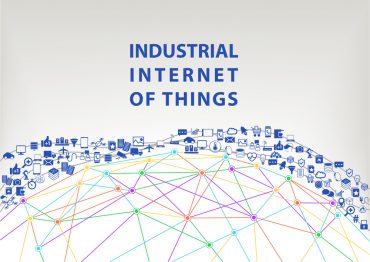
Deploying AI applications at the edge with 5G has the potential to generate new revenue sources in manufacturing, putting the industry at the forefront of innovation.
Manufacturing – imbued with a constellation of technologies from the office to the shop floor to the products they ship – appear to be several steps ahead of other industries in embracing the connected economy.
That’s the word study released earlier this year by Vodaphone and the London School of Economics (LSE), which looked at the technology development within 2,526 businesses across the globe, with a particular emphasis on shifts seen over the last couple of years and future directions.
In terms of using specific technologies, the manufacturing sector is ahead of most other sectors surveyed, the study’s authors report. Technologies seeing adoption among manufacturers include deploying the internet of things (59%), artificial intelligence (47%), robotics (53%), mobile private networks (28%), and mobile-access edge computing (24%). Automation also is a top priority among manufacturers, with 84% now achieving some degree of automation. About 44% report they are automating day-to-day tasks, and 39% automating risk-inherent tasks.
See also: 8 in 10 Companies Will Step Up 5G and Edge Initiatives
“The pandemic clearly caused many manufacturers to accelerate their digital transformation plans and invest in modern technologies that will put them in a good place for the future,” according to Marc Sauter, head of IoT product management at Vodafone Business, quoted in ComputerWeekly. “Technologies such as IoT, 5G, and mobile private networks will be absolutely vital in securely connecting assets in a factory, enabling innovative and new use cases like automated guided vehicles, augmented and virtual reality on the shop floor, and connected robots.”
The rise of artificial intelligence to support high-level and real-time analysis is driving these initiatives forward. “Deploying AI applications at the edge with 5G has the potential to generate new revenue sources — and position AI as the standard-bearer for 5G,” states a report in MIT Technology Review. This opens opportunities, including smart manufacturing, enhanced retail logistics, and automated warehouses, the report’s authors point out.
The MIT report took a deep dive looking at the application of AI, edge, and 5G applications at Audi. The automaker is applying “AI inference and computer vision on the factory floor with autonomous robot welders that can react in real time and fix issues that may arise when welding the frame of a car. “In the past, welding required a lot of manual intervention and inspection to ensure sufficient quality,” according to Nick McKeown, senior vice president and general manager of the network and edge group at Intel, quoted in the report. “Now, with cameras reviewing the quality of the weld, the need for human intervention has greatly decreased.”
See also: Achieving the Edge in Manufacturing – via Edge
Audi’s goal – as is the case with other manufacturers ahead of the curve with edge, 5G, and AI implementations – is to create smart factories with scalable and flexible platforms.
Such forward-looking companies, as explored in the Vodafone-LSE report, have common characteristics: they are adaptable and open to actively exploring new technology approaches. They “are putting more time and money into their digital transformation. But it’s important to know that becoming [a digital leader] isn’t reliant on speeding through this. In fact, each business should take one step at a time and see their attitude towards technology as equally important.”
Vodafone and LSE’s research showed that leading companies “are more open to being the first to try new tech, helping them to advance their businesses and reap the rewards ahead of the crowd.” Tellingly, 86% of leading organizations say they’re taking action to deal with an automated world, compared to 75% of businesses overall. In addition, 51% of leaders report they are training employees to build skill sets that cannot be replaced by automation.”







